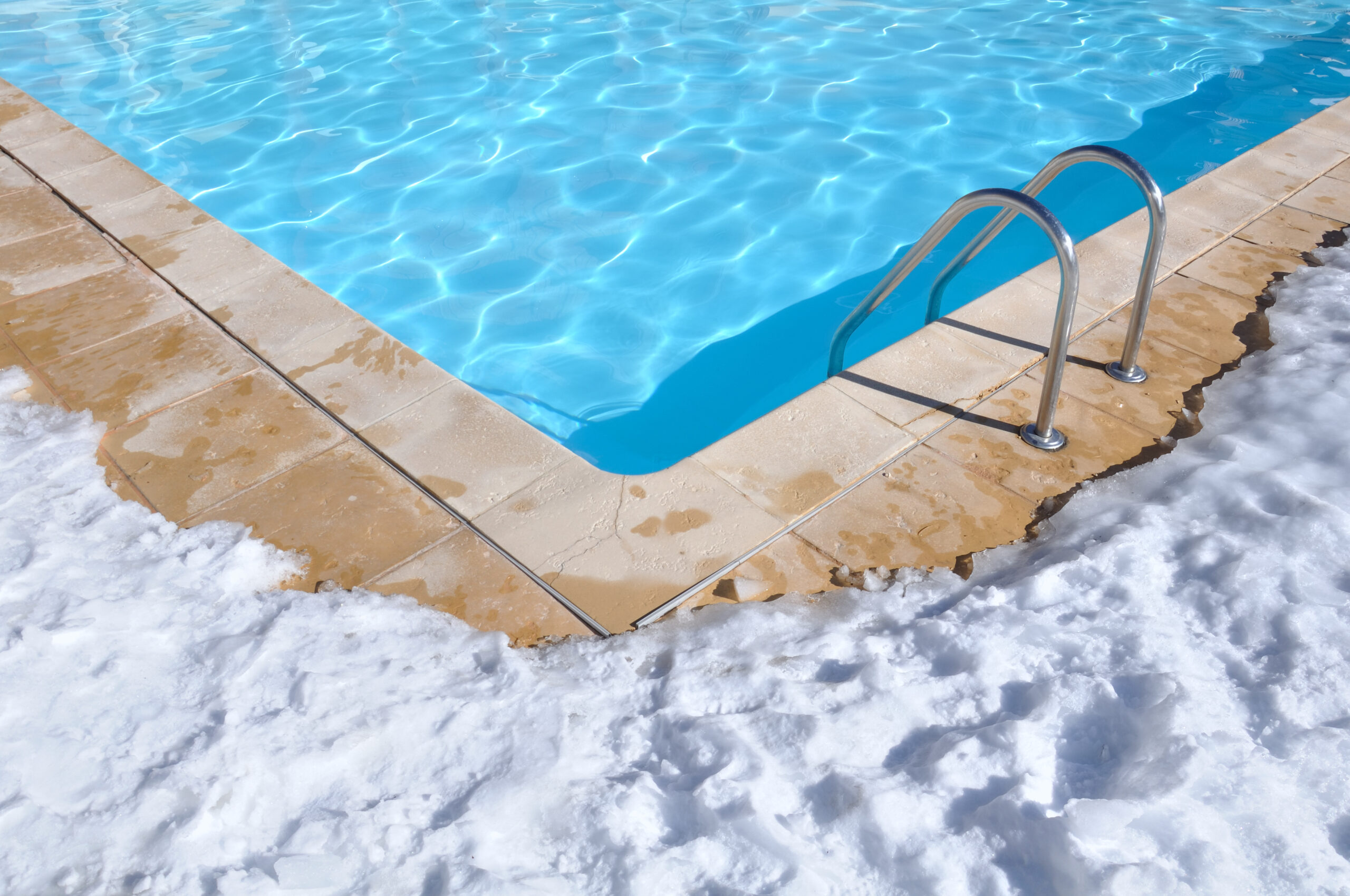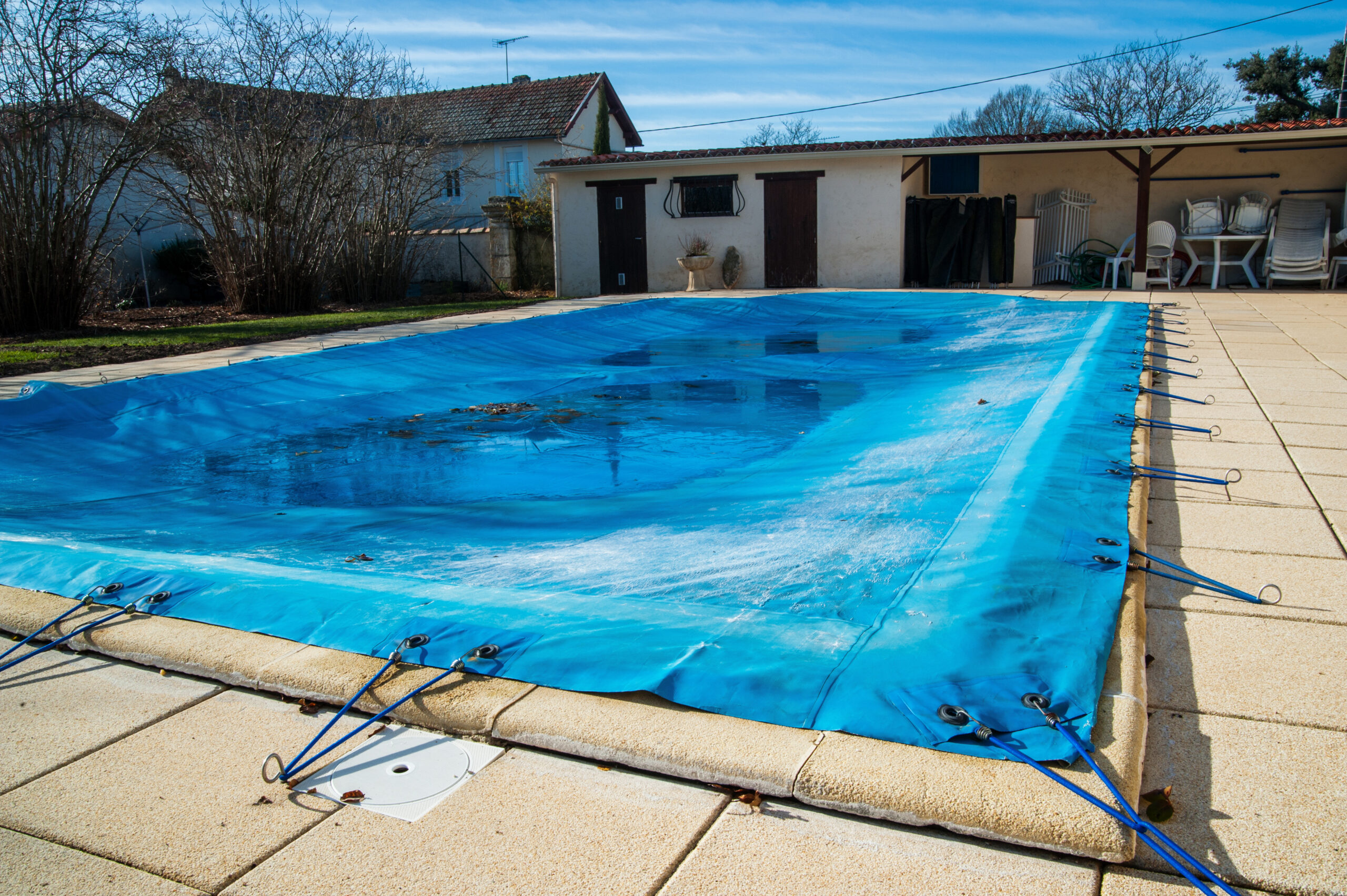You’re a proud pool owner, but extreme weather can throw you off balance. Whether it’s scorching heat or freezing cold, your pool needs special care.

This guide will equip you with practical strategies to keep your pool in top condition, no matter the weather. You’ll learn how to balance chemicals during fluctuating climates and prepare for severe weather events.
So let’s dive in – don’t let the elements spoil your swimming fun!
Understanding the Impact of Extreme Weather on Your Pool
You’ve got to understand how extreme weather can significantly impact your pool’s condition and functionality. Weather-induced damages aren’t just a possibility; they’re practically inevitable if proper pool protection measures are not in place.
Consider the effects of severe winter temperatures, for instance. Freezing conditions can cause ice to form in your pipes, leading to cracks or even bursts that result in costly repairs. Also, consider that heavy snowfall could potentially damage your pool cover or collapse an above-ground structure.
In contrast, summer’s intense heat can equally wreak havoc on your beloved oasis. High temperatures and direct sunlight can lead to fast evaporation, leaving water levels low and causing potential harm to pumps due to dry running. Additionally, excessive heat might trigger algae bloom, which could turn your clear blue water into a green mess.
The key is staying proactive rather than reactive. This involves using protective covers effectively, maintaining appropriate water levels, and ensuring chemical balances are correct throughout every season. Remember the old saying: prevention is always better than cure!
Essential Pool Maintenance Tips for Hot Weather
In sweltering conditions, it’s crucial to know the right steps for keeping your swimming area in top shape. Water evaporation can be a major issue, so let’s start with prevention.
Cover your pool when it’s not in use – this simple act reduces water loss by up to 95%. Opt for a solar cover; they’re affordable and double as a heat trap, warming your pool naturally.
Sunscreen pollution is another concern you can’t ignore. Sunscreens wash off bodies into pools and affect water quality. Install an efficient filtration system that captures contaminants before they pose problems. Regularly backwash or clean the filters.
Now let’s talk water chemistry: overbearing heat increases algae growth and makes chlorine evaporate faster than usual. You’ll need to test the pH levels frequently (daily if possible), maintaining them between 7.2-7.6 for optimal results.
Lastly, keep an eye on the water level – hot weather encourages quicker evaporation! Replenish promptly to maintain proper skimmer operation and overall balance.
Remember these tips, stick to your maintenance schedule religiously, and you won’t have any trouble enjoying your pool even in blistering temperatures!
Key Pool Maintenance Strategies for Cold Climates
When it’s chilly outside, there are essential strategies you need to follow to ensure your swimming spot remains in top condition. A crucial part of this is implementing freeze protection measures. You’ll want to keep the water circulating as stagnant water freezes faster than moving water. It’s also advisable to set up a freeze protector for your pool that will kick on the pump when temperatures plummet.
Be vigilant about skimming and cleaning, too. Debris can lead to algae growth even in colder weather, and it’s harder to remove once frozen into the ice. Regularly use a long-handled net for this task.
Now let’s talk winter pool covers – they’re not just an optional accessory but a must-have item in cold climates. These covers shield your pool from harsh weather conditions while also preventing debris from entering the pool. Remember, though, these covers should be sturdy enough to withstand heavy snowfall without sinking or tearing.
In doing all these steps, you’re not only maintaining your pool during winter but also preparing it for an easy opening when warmer weather rolls back around. Practice these measures consistently for optimal results.
Balancing Pool Chemicals During Weather Fluctuations
Managing the balance of chemicals in your swimming spot during weather fluctuations can be quite a chore, but it’s vital for keeping the water clean and safe. You’d want to ensure that you have effective Chemical Storage Safety protocols in place alongside reliable Weatherproof Test Kits.
1. Chemical Storage Safety: Always store pool chemicals in a cool, dry place away from direct sunlight. Keep them sealed when not in use to prevent any moisture or heat damage.
2. Weatherproof Test Kits: Invest in high-quality test kits that can withstand extreme temperatures and provide accurate readings regardless of weather conditions. Regular testing is key to maintaining optimal chemical levels.
3. Regular Adjustment: Don’t wait until the weather changes dramatically before adjusting your pool chemistry. Regularly check and adjust pH, alkalinity, and sanitizer levels according to the current weather condition.
Remember, mastering this process demands consistency and attention to detail. Don’t just react; anticipate these changes by always being prepared with secure storage options for your chemicals, a robust test kit that won’t falter under extreme conditions, and an unwavering commitment to regular maintenance checks.
Emergency Pool Care: Preparing for Severe Weather Events
You’ve got to prepare your swimming area for severe weather events as part of an emergency care plan. Remember, stormproof equipment isn’t just a luxury-it’s a necessity.
Start by securing or storing any loose items around the pool that could become projectiles in high winds. This includes patio furniture, toys, and cleaning tools.
Next, focus on the pool itself. Consider investing in a safety cover designed to withstand heavy rains and wind. These covers not only protect your pool from debris but also prevent excess water from entering the pool and causing overflow.

Additionally, if you live in an area prone to hurricanes or tornadoes, consider installing surge protection for your pool’s electrical equipment-this can be a lifesaver when it comes time for disaster recovery.
Moreover, don’t drain your pool! Keeping water in it actually helps maintain its structural integrity against strong pressure changes during storms.
Post-storm cleanup is crucial too. Test and rebalance your pool’s chemicals as soon as possible after the event; this minimizes potential damage to the lining and filtration system.
Remember: preparation is key; proper care before extreme weather hits can save you considerable time and money during disaster recovery!
Frequently Asked Questions
What Kind of Pool Covers Are Recommended for Extreme Weather Conditions?
For extreme weather conditions, you’ll want a pool cover with high durability and weatherproof materials. These withstand harsh elements best, ensuring your pool’s protection no matter how severe the climate gets.
How Can I Protect the Pool Equipment During Extreme Weather?
To protect your pool equipment in severe weather, you’ll need to invest in equipment insulation and weatherproof lockers. These will shield your gear from harsh conditions and prolong its lifespan significantly.
Are There Specific Signs of Damage I Should Look for After a Severe Weather Event?
Yes, watch for damage indicators like cracks in the pool’s surface, leaks, or malfunctioning equipment. Despite your weatherproofing measures, severe weather can still cause these issues. It’s crucial to inspect everything thoroughly afterwards.
How Does Extreme Weather Affect the Lifespan of My Pool?
Extreme weather can severely impact your pool’s lifespan. It’s crucial to follow seasonal pool care guidelines and use weatherproof pool materials. Heat, cold, wind, and storms can all cause wear and tear.
What Are Some Energy-Efficient Methods to Heat My Pool in Cold Climates?
You should consider solar heating panels and heat pumps. They’re energy-efficient methods to heat your pool in cold climates. Solar heating uses the sun’s energy, while heat pumps transfer warmth from the air to your pool.
